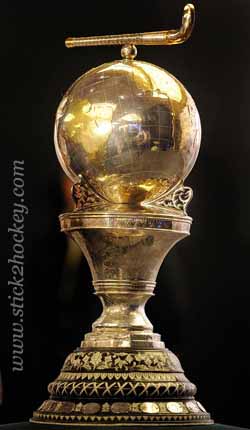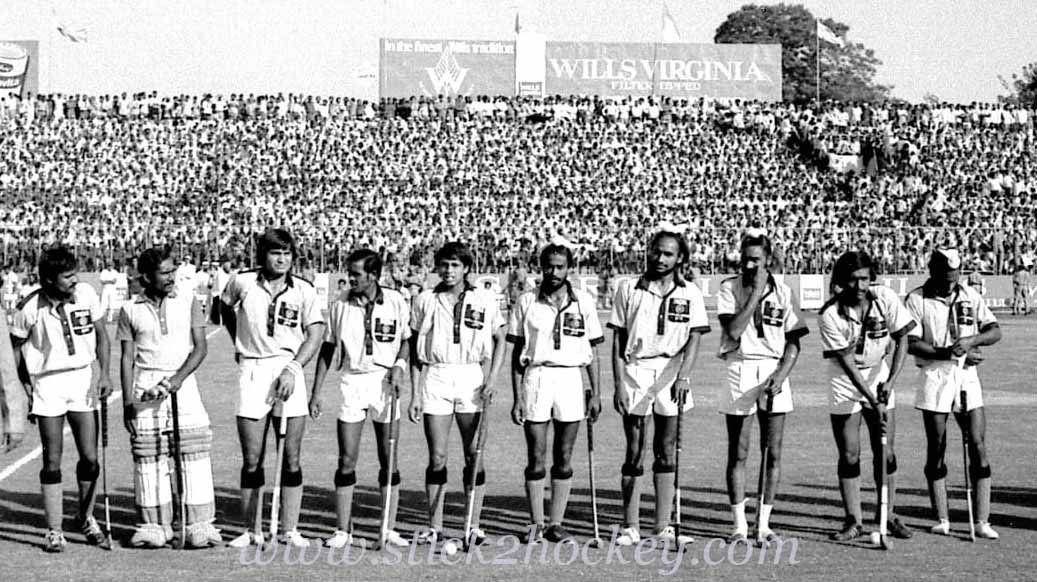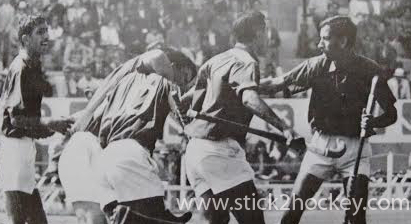Share
BY ERROL D’CRUZ
New Year’s Day 1982 was special for the hockey community. It arrived during the 5th World Cup in Bombay (now Mumbai) which began on December 29, 1981. The unusual starting date of a World championship meant that some teams travelled to Mumbai with their Christmas dinners not quite digested.
Played in “winter”, the climate was still oppressive to European teams. The heat and humidity took their toll and one English player named Wilkinson collapsed from dehydration.

In the final on January 12, Pakistan debunked the theory that the event would be open while cruising to their third title. The Green Shirts beat West Germany 3-1 in the final to finish with an all-win record and an imposing goal record of 35-4 from seven matches. All Pakistan’s wins were secured by margins of two goals or more and one against New Zealand by 12-3.
Hassan Sardar, the centre-forward par excellence, was the spearhead of the triumph. He was backed up by the legendary Samiullah, Kallemulah, Hanif Khan, Mansoor Jr with captain Akhtar Rasool, the immaculate centre-half. Rasool duly lifted the magnificent trophy donated by his country itself for the inaugural 1971 World Cup in Barcelona where Pakistan won their first of three titles at the time (a record four in all).
SALIENT FEATURES OF THE 1981-82 MUMBAI WORLD CUP:
The last global major tournament on natural grass: Mumbai was the last global major tournament on natural grass. The next World Cup was held at Willesden, England, on an artificial pitch. The Olympics had already made the switch. The matches in Mumbai were played at the BHA and Wankhede stadiums. With international hockey committed to switching to artificial pitches as good natural grass pitches were tough to come by, the fifth World Cup proved that a firm, true natural grass pitch could produce high quality and entertaining hockey.

Crowd assembled in Mumbai to see India at the World Cup, but the team failed them Photo: Ashok Vahie
The first ever World Cup in India:
India were named hosts for the 1975 World Cup with Mumbai as the venue. But administrative chaos within the ranks of the IHF forced the event to be moved to Kuala Lumpur which, by a pleasant quirk, India won for their only title till this day. Since Mumbai, India have hosted the World Cup twice more – New Delhi 2010 and Bhubaneswar 2018.
Expectations belied by empty stands:
One expected packed stadia, and that unlucky fans would be locked out. None of that happened. Instead there were wide empty spaces in the stands especially at the main venue, the Wankhede stadium, an international cricket stadium (capacity of 36,000). The India-Malaysia opener was attended by just 6,000 and the final drew some 30,000 but the crowd was jam-packed in the East and West Stands with North and South (behind the goals) largely vacant. India’s remaining matches at the Wankhede drew some 20,000 each. The BHA stadium (capacity 15,000) hosted the India vs England match. India treated a sell-out crowd to a 4-2 victory.
Extensive TV and media coverage:
The state run Doordarshan Television station covered all matches live but poor quality black-and-white coverage didn’t quite enhance hockey’s image as a TV sport. Nor did a lack of atmosphere for matches that did not involve India and Pakistan. Six hours of air-time each day wouldn’t have drawn too many eyeballs but did ire from viewers deprived of alternative entertainment. Full marks, though, to the Fourth Estate which splashed hockey on its pages.
Cricket confirmed undisputed No. 1 sport in India:
 The Mumbai World Cup was squeezed into the calendar and dates were found between the second and fourth cricket Tests between England and India with the third Test running from January 1-6. The Wankhede stadium, was packed to capacity on each day as India beat England to go one-up in the six-Test series. During the World Cup, a few die-hards watched teams train but a stones throw away, an English College team playing a cricket match against a local side at the Azad Maidan drew hundreds of fans. The theory that the Indian triumph in the 1983 Cricket World Cup caused a shift of fan loyalty from hockey to cricket is clearly a misconception.
The Mumbai World Cup was squeezed into the calendar and dates were found between the second and fourth cricket Tests between England and India with the third Test running from January 1-6. The Wankhede stadium, was packed to capacity on each day as India beat England to go one-up in the six-Test series. During the World Cup, a few die-hards watched teams train but a stones throw away, an English College team playing a cricket match against a local side at the Azad Maidan drew hundreds of fans. The theory that the Indian triumph in the 1983 Cricket World Cup caused a shift of fan loyalty from hockey to cricket is clearly a misconception.
Spate of rule changes: On September 1, 1981, the FIH Rules Board effected several rule changes which were used for the first time at a major tournament. The bully-off was abolished and in came the back push from the centre spot. Hits-in replaced the fastidious push-ins. Also, the long corner was modified to a free-hit from the corner flag. The changes helped speed up the game and reduce stoppages.
Goals galore:
As many as 216 goals were scored at the Mumbai World Cup at an average of 5.14 per match. The most for a World Cup. India’s Rajinder Singh topped the scorers’ list with 12 goals – all with crisp penalty corner strikes.
Heartbreak for India:
India won the 1980 Moscow Olympic gold but drew cynicism over the denuded field owing to the US-led Olympic boycott. Triumphant captain at Moscow V. Baskaran was controversially dropped and Surjit Singh made captain. The team impressed on the European tour.
Playing The Netherlands on New Year’s day, India led 2-0 inside 20 minutes but lost 3-4. After wins over Malaysia (6-2), the Soviet Union (7-2) and England (4-2), the hosts lost 1-2 to Australia with a late winner. A draw would qualified India for the semifinals after the Soviet Union drew 2-2 with fancied Netherlands in the adjoining BHA stadium. Eventually, India finished fifth after beating New Zealand 3-2 and the Soviet Union 5-1. It meant that India were the first hosts not to achieve its best World Cup finish.
FINAL STANDINGS: 1. Pakistan 2. West Germany 3. Australia 4. The Netherlands 5. India 6. Soviet Union 7. New Zealand 8. Poland 9. England 10. Malaysia 11. Spain 12. Argentina.


